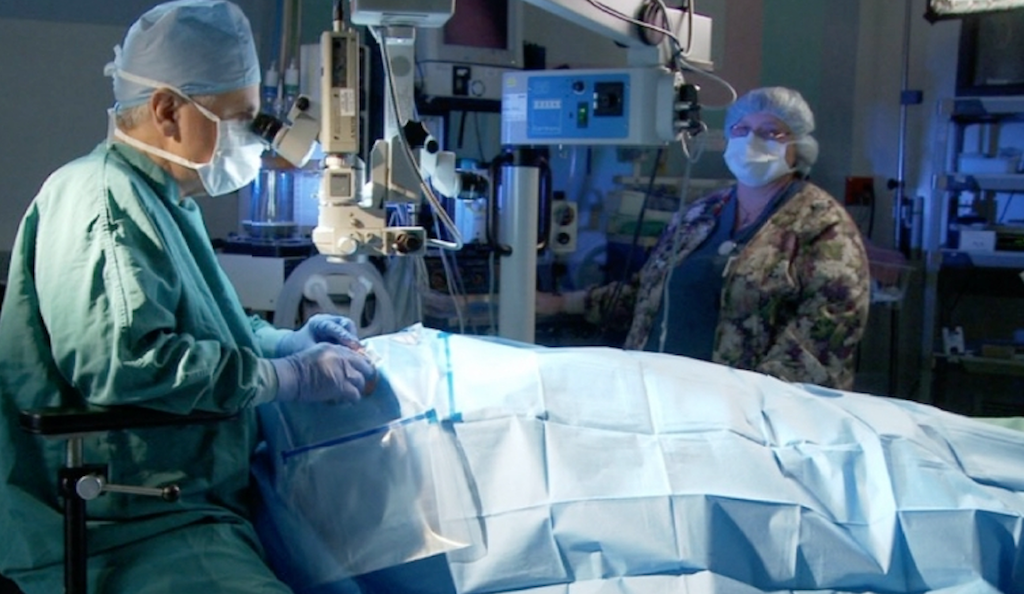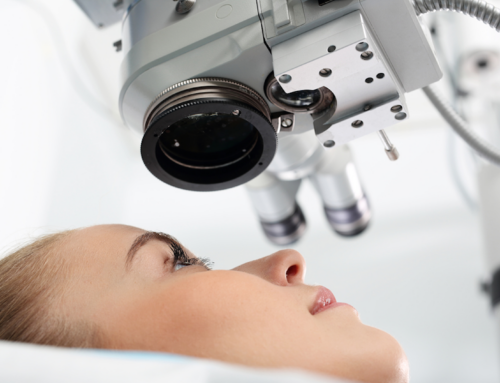 By our 80th birthday, half of us will have cataracts, according to Harvard Health. Cataracts are a condition that causes your eye’s own lens to slowly change from clear to cloudy. It typically occurs over time, but you don’t have to be in your senior years to be susceptible to it. In fact, it could start as early as your 40s or 50s. At that time, the cataract may be small — so you might not notice any impact to your vision. But once you reach your 60s, you may start to experience dull or “cloudy” vision — like looking through a windshield that has become slightly frosted or foggy.
By our 80th birthday, half of us will have cataracts, according to Harvard Health. Cataracts are a condition that causes your eye’s own lens to slowly change from clear to cloudy. It typically occurs over time, but you don’t have to be in your senior years to be susceptible to it. In fact, it could start as early as your 40s or 50s. At that time, the cataract may be small — so you might not notice any impact to your vision. But once you reach your 60s, you may start to experience dull or “cloudy” vision — like looking through a windshield that has become slightly frosted or foggy.
How did this happen?
Your eye’s lens is made up of mostly water and protein. That protein is naturally situated in a way that doesn’t block your vision and allows light to pass through. As we grow older, some of that protein may start to clump together, forming a “cataract.” It can occur in one eye or both, but it doesn’t spread from one eye to the other.
Early on, small steps can be taken to alleviate symptoms of cataracts, such as new eyeglasses, anti-glare sunglasses or magnifying lenses. However, once cataracts start to greatly impact your vision and ability to perform everyday tasks, such as reading, nighttime driving or outdoor activities (due to increased glare), surgery is the only effective treatment.
These three signs can help you determine when to have cataract surgery.
Your job performance has decreased.
Depending on how much the cataract obstructs your vision, it may impact your ability to perform certain tasks. For example, if you drive a vehicle for work — such as a commercial truck that carries goods or a vehicle for fare-paying passengers — you might struggle to see well at night. As time passes, the cataract can also cause tinting, which can make it difficult to read. That can get in the way of your everyday job functions as a writer, editor or teacher, among other career choices.
You’re worried about your safety.
Cataracts can impact your day-to-day activities, even if you’re no longer in the workforce. For instance, you may need to avoid certain driving conditions, such as when it’s rainy. You may also need to consider the time and direction that you’re driving to avoid the glare from a setting sun. This can make it difficult to take long road trips with your spouse to see the country or to visit long-distance children or grandchildren. Every person’s cataract is different, however. Some may be able to drive safely for years, according to the National Highway Traffic Safety Administration, while others may already have symptoms that limit their driving capabilities.
Your quality of life has diminished.
Spring is officially in season, which means it’s a great time to book a ski trip to Breckenridge, Colo., or enjoy a round of golf in Jupiter, Fla. Cataracts can impact many of the outdoor activities you’ve always loved — due to sensitivity to light glare. Your vision may also differ from one eye to the other, which can impact the distance vision that golfers depend on to make the shot.
Considering Cataract Surgery
Cataract surgery removes your eye’s natural lens, which has become cloudy due to a cataract, and replaces it with a clear, artificial lens. It’s one of the most common medical procedures performed in the U.S., according to the National Eye Institute. Typically an outpatient procedure, cataract surgery usually lasts roughly 10 to 15 minutes. (Just think: That’s about the amount of time you’ll spend getting a latte at Starbucks!) The recovery period is also pretty fast. Most patients achieve noticeable better vision within the first 24 hours of the procedure.
You can work with an ophthalmologist to determine if and when to have cataract surgery, based on your unique situation. Dr. Benaim has performed more than 20,000 cataract surgeries and would be happy to help answer any questions.
To book an appointment, call (561) 747-7777.
 New Address:
New Address:



